Abundance: plentiful
What: ripe fruit
How: raw, dried, preserves, wine, brandy
Where: Usually along edges of woods
When: fall
Nutritional Value: high in carbohydrates, vitamin A, and minerals
Mexican plum fruit

The white stuff on the fruit is wild yeast which can be used to make bread or alcohol same as store-bought yeasts.

Mexican plum tree
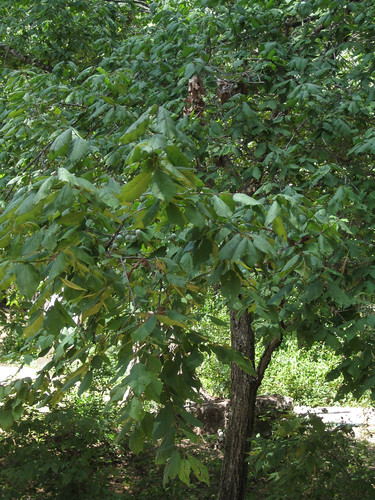
Mexican plum tree trunk
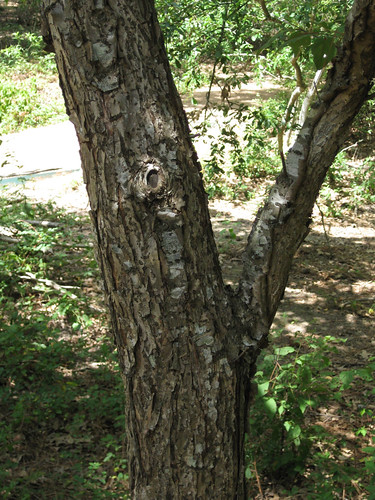
Close-up of wild plum flower (photo taken February in Houston).
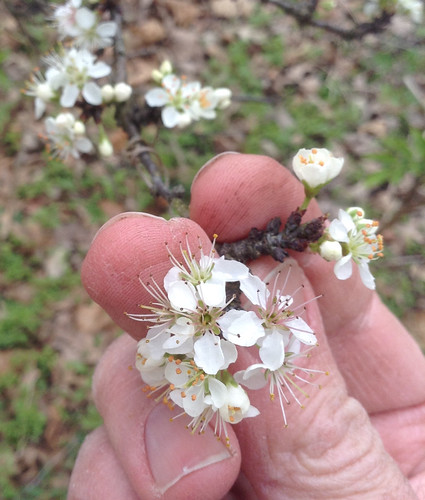
Texas distribution, attributed to U. S. Department of Agriculture. The marked counties are guidelines only. Plants may appear in other counties, especially if used in landscaping.
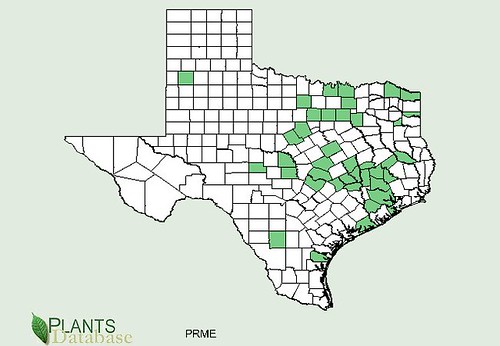
North American distribution, attributed to U. S. Department of Agriculture.
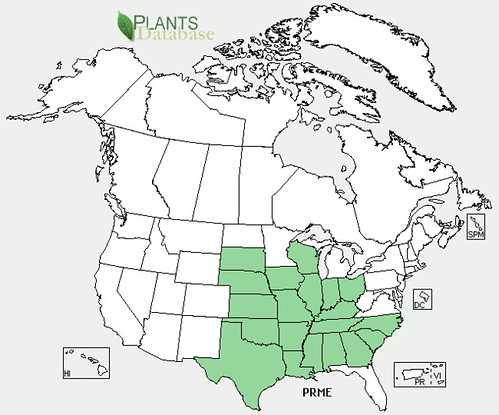
The fruit of the Mexican plum can vary wildly in taste from sweet to inedible. Other Prunus species can be found in Texas and all have edible fruit but toxic leaves and seeds/pits. Their leaves and seeds/pits contains cyanide so you shouldn't eat these parts. The amount of cyanide varies and in extreme circumstances the seeds can be roasted and then eaten if they are NOT bitter.
The gray powder on the surface of the plums is a wild yeast which can be used to start sourdough or make wine. To use wild plums to create a sourdough follow these steps:
Step 1. On day 1 combine 1 cup whole wheat flour with 1/2 cup cool, non-chlorinated water, and 4-6 undamaged, gray-dusted wild plums in a bowl and gently stir together. Cover with a towel and let sit somewhere warm and undisturbed.
Step 2. After 24 hours discard half the mixture but leaving the plums in the retained portion. Add 1 cup unbleached flour and 1/2 cup non-chlorinater water. Gently mix everything. Cover with a towel, let sit somewhere warm for 24 hours.
Step 3. By now (day 3) you may see some bubbling in your starter and it'll hopefully have a somewhat fruity scent. If the starter is bubbling it's time to remove the plums. You'll also have to start "feeding" it twice a day. For each feeding scoop up heaping 1/4 cup of the starter and combine it with 1 cup unbleached flour and 1/2 cup non-chlorinated water about every 12 hours. Unused starter should be shared or discarded.
Step 4. Keep repeating Step 3 for 3-7 days until it almost doubles in size between feedings and has a nice, tangy aroma.
Step 5. Start making sourdough breads! Move unused sourdough starter to the fridge, discarding half and feeding it 1 cup flour and 1/2 cup water once a day. If you don't remove some starter every day it'll overrun your container and also likely become too acidic, killing itself. Humans aren't the only creatures that take over paradise and end up killing ourselves with our waste. Yeast does this, too.
For making wild plum wine you should get 101 Recipes for Making Wild Wines at Home: A Step-by-Step Guide to Using Herbs, Fruits, and Flowers (Back to Basics Cooking)
Buy my book! Outdoor Adventure Guides Foraging covers 70 of North America's tastiest and easy to find wild edibles shown with the same big pictures as here on the Foraging Texas website.

